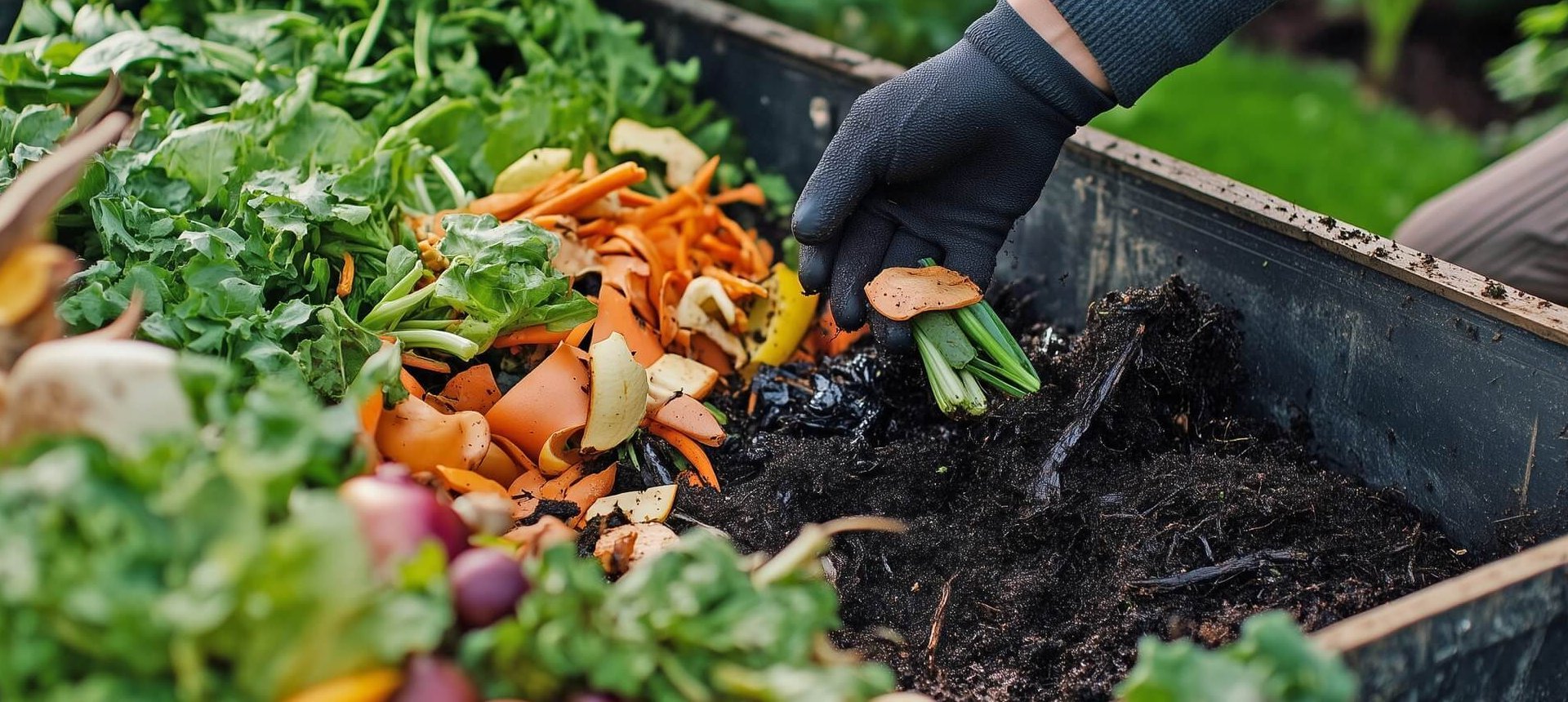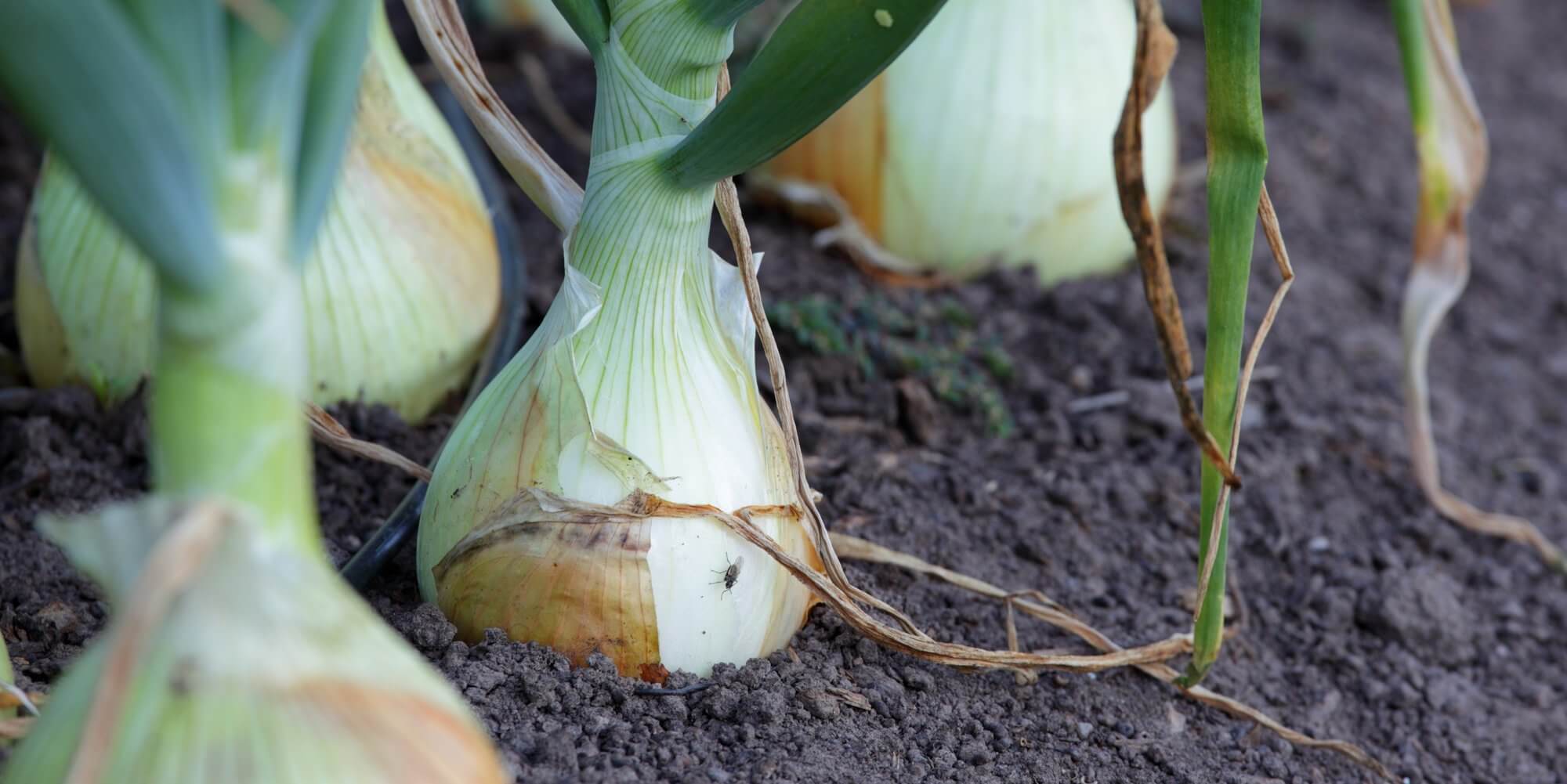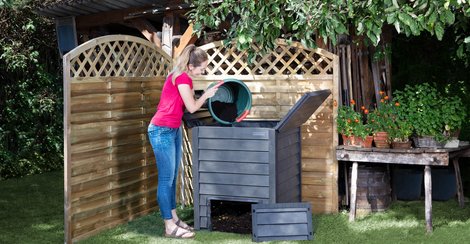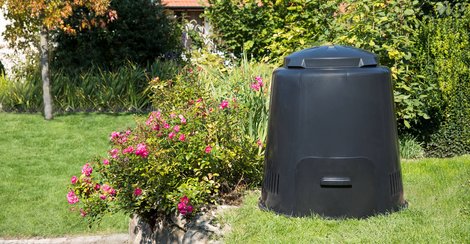Garden Projects for Autumn
When the days get shorter and the leaves turn colourful, a very special time begins in the garden. The season of barbecues, water fights and summer flowers comes to an end – making way for new ideas. Autumn is the perfect time to tidy up, get creative and prepare your garden for the coming months. In this article, we'll show you how to get the most out of your garden even after summer is over.
Making Good Use of Leaves – A Natural Resource Instead of Waste
Autumn brings not only a drop in temperature, but also lots of fallen leaves. What may seem like garden waste is actually a valuable, sustainable resource with many uses.
Leaves as frost protection:
A loose layer of leaves on garden beds helps protect the soil from frost and temperature swings. Sensitive plant roots benefit from this natural insulation. Raised beds and plant pots can also be covered to retain warmth and moisture longer.
Habitat for wildlife:
Leaf piles provide small animals such as hedgehogs, insects and amphibians with a protected winter home. If you have a quiet, undisturbed spot in your garden, you can collect leaves there and actively contribute to the preservation of biodiversity.
Leaves for composting:
Leaves are excellent compost material – especially when combined with other garden waste such as grass clippings, twigs or kitchen scraps. As leaves alone tend to be rich in carbon, they should be mixed with nitrogen-rich material to promote balanced composting. Well-shredded leaves rot faster and improve the soil structure in the long term.
Clearing and Preparing Beds – Autumn as the Start of the the Next Gardening Year
Autumn is the ideal time to clean harvested beds and prepare them for the coming season. Now is the time to carry out important maintenance measures that regenerate the soil and lay the foundation for successful planting in spring.
Remove plant debris and compost it:
Wilted plants, root debris and dead leaves should be carefully removed. Healthy plant debris can be disposed of on the compost heap, where it provides valuable organic matter. Diseased or pest-infested material, on the other hand, should be disposed of in the residual waste to prevent it from spreading.
Sow green manure:
If you want to do something good for the soil, now is the time to sow green manure. Fast-growing plants such as mustard, phacelia or lupins are particularly suitable. Their roots loosen the soil, suppress weeds and enrich it with nutrients. After the first frost, the plants die and can simply be raked in – a natural fertiliser for the next year.
Don't forget soil care:
After clearing, lightly till the soil with a digging fork to improve aeration and structure. You can also work in compost or organic fertiliser.
Tip for vegetable beds:
If you want to get an early start in spring, you can already start planning where to grow which crops. Crop rotation and mixed cultivation help to keep the soil healthy and prevent pests.

Caring for Garden Furniture and Tools
Before frost and damp weather set in, it’s worth checking your garden furniture, tools, and decorations. A little care now protects them from damage and ensures they’re ready for spring.
Garden furniture should be checked for weather resistance. Wooden furniture benefits from a protective glaze or maintenance oil, while plastic furniture should ideally be cleaned and stored in a dry place. If you do not have a sheltered storage area, you can use weatherproof covers.
Tools such as spades, shears and watering cans should be thoroughly cleaned and dried before storage. Metal parts can be protected from rust with a little oil. Battery-powered devices should be discharged and stored frost-free.
Decorations and planters made of clay, ceramic or glass are particularly sensitive to frost. They should either be brought indoors or well packed and stored in a dry place to prevent cracks and breakages.
Plant Bulbs Now – For a Blossoming Spring
If you want to enjoy a colourful sea of flowers in spring, you should get started in autumn. Many early bloomers such as tulips, daffodils, crocuses, hyacinths and snowdrops need the cold season to develop their full splendour in spring.
The best time to plant is between September and November, before the ground freezes. It is important to choose a sunny to semi-shaded location with well-drained soil so that the bulbs do not rot. Heavy soils can be loosened up with a little sand.
The planting depth depends on the size of the bulb: as a rule of thumb, plant them about two to three times as deep as they are tall – for tulips and daffodils, this is usually around ten centimetres. The distance between the bulbs should be about 5 to 15 centimetres, depending on the variety.
After planting, water the bulbs lightly so that they grow well. A layer of mulch made from leaves or compost provides additional protection against severe frost and improves the soil structure.
Tip: If you want to get creative, you can plant bulbs in groups or patterns – this creates particularly beautiful effects in flower beds or on lawns in spring. Planters can also be filled with early bloomers, but they should be kept frost-free during the winter.

DIY Projects for Quiet Days – Creative and Sustainable Through Autumn
With its calm atmosphere and natural colours, autumn invites you to get creative. Especially now, as the garden slowly prepares for winter, there are numerous opportunities for simple but effective DIY projects – ideal for relaxing afternoons at home.
Use natural materials from your garden or woodland walks — branches, cones, leaves, bark, or dried flowers — to:
- Make plant labels from scrap wood or flat stones – practical and decorative at the same time.
- Build an insect hotel that provides a safe haven for wild bees, ladybirds and other beneficial insects. This promotes biodiversity and supports the ecological balance in the garden.
Make an autumnal wreath from natural materials to decorate your door or table and create a cosy atmosphere.
These projects are not only creative, but also sustainable: they promote upcycling and appreciation for natural resources. They are also ideal as a group activity with children or friends – and create wonderful memories at the same time.
Tip: If you want to collect and store garden waste such as leaves, twigs or cuttings in a clever way, you can use the GARANTIA Toni round container, for example – robust, weatherproof and ideal for DIY fans who love tidiness.



